BUSINESS & ECONOMY
The Ravages Of Earth: Natural And Man-Made
Published
2 years agoon
By
Editor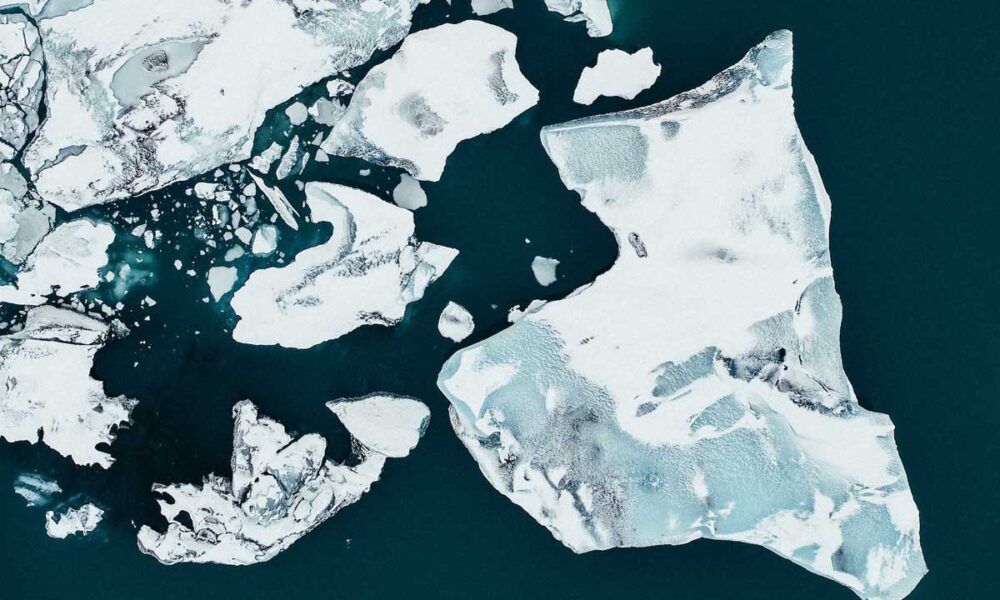
Did you know that women represent just 38 per cent of all ocean scientists? A women-led community organisation in the Seaflower UNESCO Biosphere Reserve in the Caribbean, is working to restore some of the most important marine ecosystems in the world and paving the way for bigger women’s representation in ocean science.
Known as ‘the island in the Sea of the Seven Colors’, San Andres is the biggest island in the Seaflower, containing part of one of the richest coral reefs in the world
San Andres itself is a coral island, meaning it was geologically built by organic material derived from skeletons of corals and numerous other animals and plants associated with these colonial organisms. These types of islands are low land, being mostly only a few metres above sea level, surrounded by coconut palms and white coral sand beaches.
It is no coincidence that this Colombian island is a world-class scuba diving destination with crystal clear waters, and a tourist hub visited by over a million people each year.
But being so ‘in demand’ has a key downside: San Andres’ unique ecosystems and natural resources have been deeply impacted. This is something that biologist and professional diver Maria Fernanda Maya has witnessed first-hand.
A community protecting the ocean
“I have seen San Andres change in the past 20 years; the decrease of fish and coral cover has been quite high. Just like the rest of the world, we have experienced a very large demographic explosion, and the pressure on our resources is increasing,” she tells UN News.
Ms. Maya has been diving and working most of her life to protect the treasures of the Seaflower Biosphere Reserve. She is the director of Blue Indigo Foundation, a women-led community organization that works towards the sustainable development of the San Andres Archipelago, and the protection and restoration of its marine ecosystems.
She says she decided to create the foundation because she believes that the local community must lead the protection of its own resources.
“I have worked for many international and national-led environmental projects in the past, and what happens is that people come, do a timed project, and then leave. And then there is no way for the local community to continue it,” the biologist explains.
Ms. Maya works alongside scientific coordinator Mariana Gnecco, who is her partner in the foundation.
“I am an islander; I formed a relationship with the ocean before I was even born. I’ve always known I never want to be far from the sea,” she tells UN News.
Ms. Gnecco has been freediving since she was just 10 years old, and, like Ms. Maya, got her scuba certification before the age of 14 and later graduated from university as a biologist. She is now also pursuing her PhD.
Women in marine science
According to UNESCO, women engage in all aspects of ocean interaction, yet in many parts of the world, women’s contributions – both towards ocean-based livelihoods like fishing, and conservation efforts – are all but invisible as gender inequality persists in the marine industry as well as the field of ocean science.
In fact, women represent just 38 per cent of all ocean scientists and further, there is very little data or in-depth research on the issue of women’s representation in the field
Both Ms. Maya and Ms. Gnecco can attest to this.
“Men are the ones usually leading marine science and when there are women in charge they are always doubted. Somehow, it’s good to have them as assistants, or in the laboratory, but when women lead the projects, I have always felt there is some kind of pushback. When a woman speaks with passion ‘she is getting hysterical’; when a woman makes unconventional decisions, ‘she is crazy’, but when a man does it, it is because ‘he’s a leader’”, denounces Ms. Maya.
She says that because this has been an unwritten truth that women grapple with, she worked hard at the Foundation to create and nurture an atmosphere that is the opposite.
“We have been able to harmonize the work between women and men partners, recognizing, valuing and empowering the feminine forces, as well as what men have to offer,” Ms. Maya stresses.
“Our opinions, our expertise, and our knowledge have been overlooked for so many years that being able to lead a project like this now means a lot. It symbolizes a [a great deal] in terms of equality and inclusion. Although we still have a long way to go because women in science are still undermined a lot of the time, I think we are on the right path to tackle that problem for good,” echoes Ms. Gnecco.
Saving the coral reefs
On the day the Blue Indigo biologists met with the UN News field reporting team, Ms. Maya and Ms. Gnecco braved a non-stop torrential downpour caused by a cold front in San Andres, a common occurrence during the Atlantic hurricane season.
That morning, we thought it might be impossible to report this story because the rain had turned the island’s streets into rivers, and some of the areas we needed to reach had been turned into mud pits.
“And they say women are scared to drive,” Ms. Maya said with a sly laugh when she picked us up on the way to one of the restoration sites they are working on as one of the local implementers of the nationwide project “One Million Corals for Colombia”, that aims to restore 200 hectares of reef across the country.
Earlier that morning, all diving on the island had been halted due to the weather, but conditions (at least on the water) did eventually improve, and authorities turned the red flag yellow.
That news sparked a mini celebration among a group of eager student divers who thought their day was ruined.
Meanwhile, the rest of us put on scuba gear and walked toward the shore in the (still) pouring rain.
“Once you’re underwater, you are going to forget about this grey day. You’ll see!” Ms. Maya said.
And she couldn’t have been more right. After taking the plunge from the rocky (and slippery) coral coast on the west side of the island, we experienced incredible calm beneath the waves.
The visibility was extremely good, and the biologists took us through some of the rope-type coral nurseries they were working on where Acropora coral fragments are growing. We also saw some of the already-transplanted coral within the stunning reef of San Andres.
Blue Indigo Foundation works closely with diving schools on the island, and they contribute to their restoration efforts. The NGO also teaches specialized courses in restoration for international divers several times a year.
“People come over to see our project and learn and they get engaged easier because then they ask us for the coral. ‘Oh, how’s my coral doing? The one we planted on the reef, how’s it doing?’,” Mariana Gnecco explains, adding that when people see the organisms thriving, it helps to raise general awareness.
The corals within the Seaflower Biosphere Reserve have been declining since the 70s, fueled by the rise in the temperature and acidification of the water, caused by excessive carbon emissions and consequent climate change.
“Those are the global threats, but we also have some local threats that are harming the reef, for example, overfishing, bad tourism practices, boat collisions, pollution, and sewage disposal,” underscores Ms. Gnecco.
Raizal people’s efforts and sustainable tourism
By definition, UNESCO Biosphere Reserves are de facto centres for learning about sustainable development. They also provided an opportunity to examine up-close the changes and interactions between social and ecological systems, including the management of biodiversity.
“When a biosphere reserve is declared, it means that it is a special place, not just because of its biodiversity, but also because there’s a community that has a special connection with that biodiversity, a connection that’s been going for decades with a cultural and historical value,” Ms. Gnecco explains.
The Seaflower is very special, she adds, telling us that it comprises 10 per cent of the Caribbean Sea, 75 per cent of Colombia’s coral reefs and that it’s a hotspot for shark conservation.
“The local community – the Raizal people, that have been living here for generations – have learned how to relate to these ecosystems in a healthy and sustainable way. This is our way of living for both Raizal and other residents. We depend completely on this ecosystem and on its biodiversity, that’s why it’s important and special”, the biologist adds.
The Raizal are an Afro-Caribbean ethnic group living in the islands of San Andrés, Providencia and Santa Catalina off the Colombian Caribbean Coast. They are recognized by the Government as one of the Afro-Colombian ethnic groups.
They speak San Andrés-Providencia Creole, one of many English Creoles used in the Caribbean. 20 years ago, the Raizal represented over half of the island’s population. Today, the general population is nearly 80,000, but the Raizal make up about 40 per cent, due to a high migration influx from the mainland.
Raizal Marine Biologist and researcher Alfredo Abril-Howard also works at Blue Indigo foundation.
“Our culture is closely tied to the ocean. The fishermen are the first to notice changes in the coral – for example, they notice that healthy reefs attract more fish. They can describe a vivid picture of the way the reefs looked in the past…no one understands the importance of our reefs better than them,” he underscores.
The expert says that he believes there is a major socioeconomic issue in San Andres: other than tourism, there are very few ways for his people to make a living.
“Tourism keeps growing and most economic activities revolve around it. So, we need more fish because there are more tourists, so now we catch fish of any size affecting the ecosystem”, he says, emphasizing that better tourism management could generate better economic opportunities for locals while letting the reef flourish at the same time.
Mr. Abril-Howard explains that diving, if sustainably managed, can also have an impact on the ecosystem. It can also help to raise awareness about restoration efforts and at the same time give back to the reef.
“We need a change in the way we do our tourism. Restoring our reefs is important, but we also need to make visitors aware that it is there, and that it is not a rock, It is a living being and that they shouldn’t step on it. These are small things that can benefit the future coral cover. We also need to show people that there is more to this island than coming to party and get drunk, so they can learn something,” he says.
A job for ‘superheroes’
For Camilo Leche, also Raizal, coral restoration efforts are now a part of his life as a fisherman.
“I have been fishing for over 30 years. I remember seeing coral bleaching for the first time – you know when coral starts turning white – and thinking that it was because the coral was getting old, like we get white hairs. But now I understand it is because of climate change,” he told us just before going on his morning fishing expedition.
“Before I could see beautiful giant corals around here and it was so easy to find lobster and big fish, now we have to go further and further to find them”, he adds.
Mr. Leche says that he hopes that world leaders can put their ‘hands on their hearts and in their pockets’ to finance more restoration efforts such as the one undertaken by the Foundation, which he now helps.
“I have learned how to fragment corals, to put them in the ropes. We also go out to make the transplants. And those little pieces are now becoming so big and beautiful, when I see them, I feel so proud of it. I feel like a superhero”.
Swimming against the tide
San Andres is not only losing its coral reef cover and fish banks, but the island also faces coastal erosion and is vulnerable to sea level rise and extreme weather events such as hurricanes.
All these are destroying infrastructure and reducing the island’s beautiful beach cover. In some areas, locals say that before they could play a football game in places where only a meter of beach is now seen.
The ecosystems Blue Indigo works to restore are essential to protect the community during extreme weather events.
For example, Colombian scientists were able to prove how the mangrove protected San Andres during hurricanes Eta and Iota in 2020, among other ways by reducing wind speeds by over 60 km/h.
At the same time, coral reefs can reduce by nearly 95 per cent the height of the waves coming from the east of the Caribbean Sea, as well as reduce their strength during storms.
“We know our restoration efforts can’t bring back the coral reef in its totality, because it is such a complex ecosystem. But by growing certain species we can have a positive impact, bring back the fish and ignite these organisms’ natural capacity to restore themselves,” says Blue Indigo chief Maria Fernanda Maya.
For Mariana Gnecco, it is about aiding the reef to survive during a transformation of its environment happening due to climate change.
“What we need is a functional ecosystem. We are trying to at least give it a helping hand so it can adapt to climate change. The ecosystem is going to change, that’s going to happen, but if we help it will happen at least in a way that is not going to die completely”, she says.
Both the UN Decade for Ecosystem Restoration and the UN Decade of Ocean Science for Sustainable Development, both of which began in 2021 and will run until 2030, aim to find transformative ocean science solutions to guarantee a clean, productive and safe ocean, and to restore its marine ecosystems.
According to UNESCO, mainstreaming gender equality throughout the Ocean Science Decade will help ensure that, by 2030, women as much as men will be driving ocean science and management, helping to deliver the ocean we need for a prosperous, sustainable and environmentally secure future.
“The women that are involved in this are paving the path for all the women that are coming behind. Indeed, the future is problematic, and we are swimming against the current, but I think anything that we can do is better than doing nothing.”
That’s Mariana Gnecco’s message to us all.
Related
You may like
-


WEF and UN-Habitat Join Forces to Unlock Critical Investment in Cities through Public-Private Collaboration
-
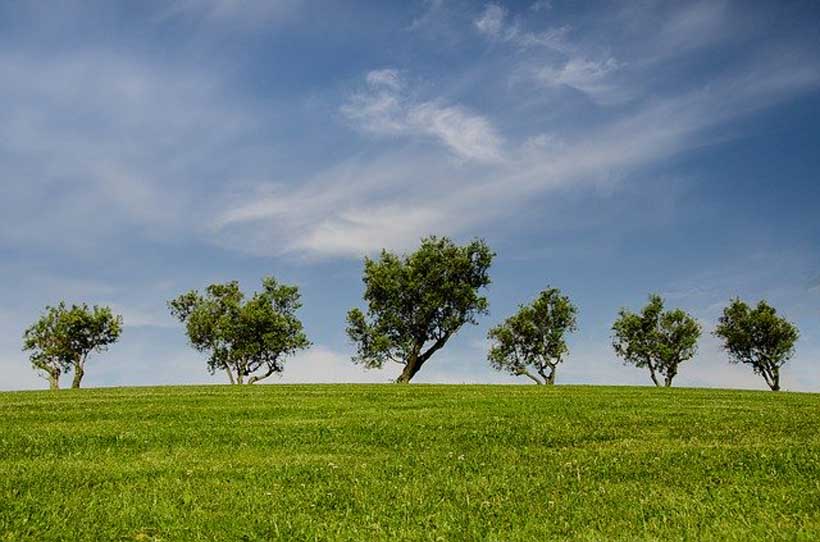

5 ways countries can adapt to the climate crisis
-


The Development of Artificial Intelligence in China: Conclusions
-


Four ways the planetary crisis is impacting mental health
-
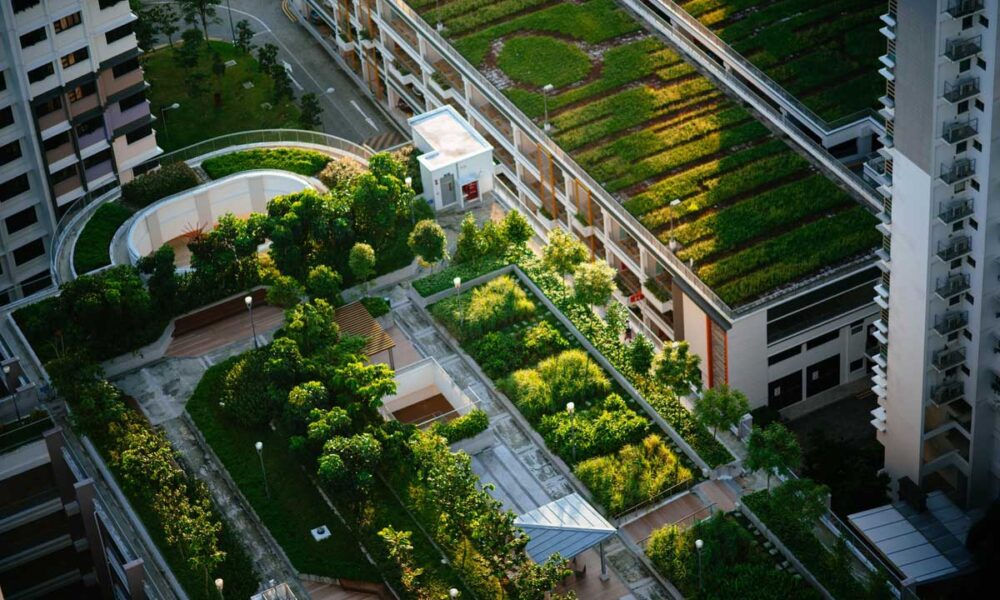

New European Bauhaus under Cohesion Policy: €50 million call for innovative projects in cities
-


The Development of Artificial Intelligence in China: Investment and attention to production
BUSINESS & ECONOMY
CFA Franc: is the Time up for the Colonial Currency?
Published
1 week agoon
April 9, 2024By
Editor
By Kai Koddenbrock
At no point in history has the CFA franc – the name of a colonial currency used in west and central African countries belonging to the franc zone – been closer to its demise. Senegal has overwhelmingly voted for leftwing Pastef candidate Bassirou Diomaye Faye (and his former party leader Ousmane Sonko) while the coup governments in Mali, Burkina Faso and Niger have been talking about leaving the CFA franc for some time.
Senegal under outgoing president Macky Sall was a pillar of the longstanding French attempt to remain influential among its former colonies, often named “Francafrique”. Now newly elected Faye, under the moniker of “Left Panafricanism”, has vowed to make his country more sovereign in food, energy and finance. Never before have four west African governments, including one of the regional leaders, Senegal, been simultaneously eager and ready to get out of the neo-colonial stranglehold of the CFA franc. The CFA franc zone was founded by then colonial power France after the second world war. Its aim was to ensure a continuously cheap influx of resources into France.
The zone is divided into two. The west African CFA franc zone has eight members: Mali, Niger, Burkina Faso, Senegal, Côte d’Ivoire, Benin, Togo and Guinea-Bissau. The central African zone has six: Cameroon, Gabon, Republic of Congo, Central African Republic, Chad and Equatorial Guinea.
Popular mobilisation against the currency has been intense in recent years in west Africa. This led to cosmetic changes to the currency arrangements. For example in 2019, French president Emmanuel Macron and the sitting president of Côte d’Ivoire, Alassane Ouattara, announced the withdrawal of French staff from some of the regional central bank’s decision-making bodies. They also waived the requirement – much maligned on the continent – to store 50% of all reserves in Paris as a guarantee to the former colonial power that they wouldn’t be wasted on irresponsible fiscal expansion. Overall, however, the CFA franc has remained more or less the same and France has not been willing to leave the arrangement of its own accord. The old colonial attachment and supposed developmental benevolence has carried the day.
But the conditions for major change are in place. The Alliance of Sahel States between the junta-led governments of Mali, Burkina Faso and Niger has stated its intention to introduce the “Sahel” as a new regional currency. Whether this initiative – and the Senegalese plan for a national currency – will amount to a full break-up of the CFA franc zone and its terminal decline will depend on how well they plan and execute the transition to several new currencies or a new one without any French involvement.
A hard road ahead
Historically, as shown by Fanny Pigeaud and Ndongo Sylla in their book Africa’s Last Colonial Currency: The CFA Franc Story, serious attempts at leaving the CFA franc since its inception in 1948 have been sabotaged by France. For example, Guinea was flooded by counterfeit banknotes when it left the CFA franc in the 1960s. Mali was put under pressure to rejoin the CFA franc after its departure in 1967. It returned into the fold in 1984. In 2011, Ivorian president Laurent Gbagbo, who had been considering pulling out of the CFA franc, was made to step down after controversial elections with the help of a military intervention force. He was then sent to the International Criminal Court before being acquitted 10 years later.
France went further in 2011 – a case countries wanting to make the next attempt at leaving the CFA franc should be cognisant of. It used its seat on the Central Bank of West African States decision-making bodies to block Côte d’Ivoire from being refinanced by the bank. It also induced the subsidiaries of BNP Paribas and Societe Generale to temporarily close their branches. Leaving the CFA franc has thus historically come with a high risk of French sabotage. But the constellation of forces has shifted and west African governments can better prepare this time. If they join forces – and Côte d’Ivoire votes for a less France-dependent president in the presidential elections in 2025 – the end of the west African CFA franc may indeed be near.
The trust factor
The stability and legitimacy of a currency depend primarily on trust. The users of a currency (people and corporations) need to trust that its price is more or less stable. This includes a reasonably low rate of inflation, and engagement in growth-inducing economic activity. Periods of high inflation and hyper inflation have always been the result of a serious economic crisis in which trust was absent.
Monetary stability thus depends on social and macroeconomic stability. This, in turn, is the result of how well governmental policies and domestic and world market processes align. A government that is seen to have a plan and is able to adapt to and steer economic pressure goes a long way in creating trust. And, by implication, it makes a new currency less prone to speculative attack or massive devaluation.
In Senegal, Pastef’s election program had a roadmap towards leaving the CFA franc and setting up a national currency. Among the key steps are:
- creating a national central bank
- refinancing of state expenditure at 0%
- de-monetising gold and preventing its import and export to build up a gold reserve
- repatriating gold reserves still stored in Paris and all over the world
- reprofiling public debt and cancelling private debt through monetary fiat
- installing a deposit insurance scheme for small savers
- building a national stock exchange.
Finally, the new currency will be floating and non-convertible or semi-convertible to shield it from speculative attacks. This menu is similar to some of the strategies China has employed over the last decades to maintain government control over the economy and shield the Chinese economic growth path from foreign – in other words speculative – interference. The success of such a strategy depends to a large degree on mobilising domestic financial and real domestic resources. And, in the absence of China’s massive domestic market, building regional economic complementarities.
The strategic challenge for Diomaye will thus be to enlist a sufficiently large group of small business people, landowners and power-brokers around Mouride and Tidjaniyya Muslim brotherhoods and the capitalist class in Senegal to his economically transformative project. This will be a sizeable challenge in the face of upcoming export revenues from gas and oil – contracts Pastef has vowed to renegotiate – and an overall economic structure that is not yet domestic market oriented.
A national currency could support this shift in focus towards the well-being of the Senegalese people. This is because its logic would be to reorient the government towards the domestic economy and its people. Imports and easy repatriation of earnings by foreign corporations, which are some of the main effects of the often overvalued CFA franc, would become more difficult.
Make or break factors
The reaction to Faye’s agenda by the International Monetary Fund, the World Bank and other donors and creditors will be crucial to watch. To what extent the new Senegalese government is prepared to dispense with their sizeable sums in aid and credits remains to be seen. Niger recently did dispense with them and reduced its budget by 40% as aid was frozen.
Overall, Senegal and the Sahel governments are in a stronger position globally than ever before. The African continent is seen as essential to ensure the energy transition in Europe as well as its diversification of oil and gas supply. And western military, diplomatic and trade hegemony on the continent is being challenged by China and Russia as well as the United Arab Emirates, Qatar and Turkey. If Senegal and the Sahel governments position the end of the CFA franc well in their overall negotiations with their international partners as well as their domestic capitalist class and opposing political forces, its end may indeed by near.
That will not be the end of the long road towards food, energy and overall economic sovereignty to the benefit of the people. But it will be an important symbolic and material victory against postcolonial interference and meddling. The colonial CFA franc has outlived its usefulness for today’s “Left Panafricanism”. Organising its end is a sizeable challenge, but for the first time in decades is one that can be confronted head on.
Kai Koddenbrock is Professor of Political Economy , Bard College Berlin
Courtesy: The Conversation
BUSINESS & ECONOMY
Inquiry on General Babangida’s Involvement in Conventional Banking despite Introduction of Islamic Finance in Nigeria
Published
2 months agoon
February 13, 2024By
EditorDear Editor,
I hope this letter finds you well. I am writing to express my curiosity and seek clarification on a matter that has caught my attention, specifically pertaining to General Babangida’s involvement in the conventional banking industry despite his role in introducing Islamic finance during the financial reforms of his military government in Nigeria. Vide your special article commemorating his 81st Birthday published in your esteemed news website: https://focus.afrief.org/trending/a-salutary-tribute-to-general-ibrahim-badamasi-babangida-architect-of-islamic-finance-in-nigeria/
It is indeed noteworthy that General Ibrahim Babangida played a pivotal role in shaping the economic landscape of Nigeria by introducing Islamic finance principles. It is fascinating to witness the implementation of Islamic finance in Nigeria, as it promotes principles that align with religious and ethical values. General Babangida’s efforts to introduce this form of finance were undoubtedly commendable, reflecting his commitment to establishing an alternative financial system that adheres to Islamic principles.
However, recent observations suggest his active participation in the conventional banking sector in Nigeria. Certainly, it is intriguing to see General Babangida’s continued involvement in the conventional banking industry, which operates under different principles. While some may argue that his involvement in both sectors is simply a matter of personal choice, it raises questions about the compatibility of his actions with the ideals and principles of Islamic finance. While the former is interest driven, the latter prohibits interest related transactions completely.
I wonder if General Babangida has ever publicly addressed this matter or explained his reasoning behind being active in both sectors. It would be enlightening to hear his perspective on how he reconciles his involvement in conventional banking with his efforts towards promoting Islamic finance. This has raised questions in my mind and perhaps in the minds of others as well.
I am keen to understand the rationale behind General Babangida’s dual engagement in both Islamic finance and conventional banking. Does this reflect a strategic approach to diversify Nigeria’s financial sector, or are there specific reasons behind his involvement in conventional banking despite advocating for Islamic finance principles?
Additionally, it would be interesting to explore the potential impact of his dual involvement on the perception and growth of Islamic finance in Nigeria. Does his presence in the conventional banking industry hinder the progress of Islamic finance, or does it have the potential to bridge the gap between the two sectors?
I believe that delving into these questions could provide valuable insights and generate constructive discussions within the Islamic finance community in Nigeria. By shedding light on General Babangida’s dual involvement and the potential implications, we can further enhance our understanding of the challenges and opportunities faced by the Islamic economy in our country.
Thank you for considering my questions, and I look forward to reading more about this topic in your esteemed Focus on Islamic Economy.
Sincerely,
Abba Musa Mamman Lagos
Kaduna
BUSINESS & ECONOMY
10 Megatrends Shaping the World in 2024
Published
2 months agoon
February 12, 2024By
Editor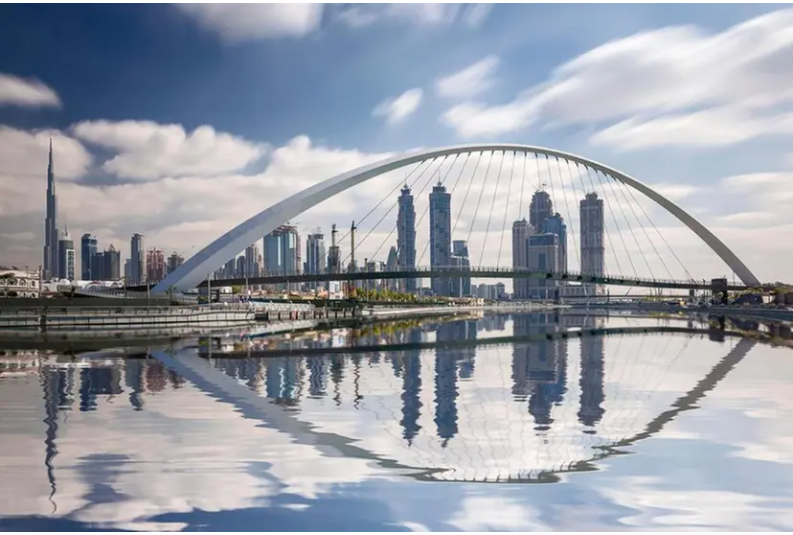
The report, “Navigating Megatrends Shaping Our Future in 2024”, was launched during the first day of the World Governments Summit (WGS) 2024, being held under the theme “Shaping Future Governments” from 12th-14th February in Dubai. The report examines the indicators that shape these megatrends, supported by evidence from today as well as future expectations. These trends inform decision-makers and foresight experts about various sectors and the potential opportunities in each.
Khalfan Belhoul, CEO of Dubai Future Foundation, said, “This report has been launched in line with DFF’s efforts to identify and communicate those trends with the most potential to shape opportunities and strengthen local and international partnerships to overcome current and future challenges.”
“The challenges that face us on our journey to the future require that we are agile enough to be able to adapt to rapid change. It is vital we pay attention to the signals we detect – only then can we be prepared to overcome challenges and seize opportunities. The World Governments Summit provides a platform for discussing these challenges and exploring the opportunities.”
Materials revolution
New types of materials will create a shift in the industry, with solutions based on artificial intelligence (AI) such as biopolymers, biorefineries, and chemical recycling paving the way. These solutions will facilitate the development of new biological and novel materials that could rival plastics.
Boundless Multidimensional Data
Enabled by developments such as 5G and 6G in addition to advanced connectivity, the availability of raw data will vastly increase. The Internet of Things (IoT) will continue being deployed in healthcare, agriculture, and smart cities, especially in the Middle East.
Technological Vulnerabilities
The cybersecurity sector will boom amid a sharp rise in smart home devices and wearable tech. According to a report by Allianz, the annual cost of ransomware is projected to reach around $265 billion by 2031. Meanwhile, the debate on the future of decentralised finance will continue.
Energy Boundaries
Advances in tech and the growing demand for energy will drive the pursuit of alternative sources of energy. Novel materials and machine intelligence will enhance current sources of energy, including their distribution around the world – and in space.
Saving Ecosystems
Approaches to conservation will be more interdisciplinary and future-focused, taking into account both societal and environmental factors. Driven by resource scarcity, climate change, and shifts in social values, environmental impact management will become increasingly holistic.
Borderless World – Fluid Economies
The world is witnessing a rise in unmediated transactions in finance, health, education, trade, services, and even space, which are blurring boundaries and creating more cross-border communities. Advances in communications, computing, and advanced machine intelligence will accelerate the creation of a borderless world that will change the way we work, live, and connect.
Digital Realities
The spread of 5G and 6G networks will enhance the applications of autonomous technologies and IoT. As quantum technologies become scalable and reliable, immersive experiences will become even more realistic.
Living with Autonomous Robots and Automation
Robotics and automation will increasingly be deployed across industries beyond automotive, manufacturing and supply chain logistics. This will provide opportunities for efficiency and innovation, although there will also be ethical challenges to address.
Future Humanity
New workplace norms will emerge, with people needing to adapt to non-traditional skill sets in areas such as digital literacy, communications, culture and sustainability.
Advanced Health and Nutrition
Accelerated progress in advanced machine intelligence, nano- and biotechnology, additive manufacturing, and IoT will transform health and nutrition, improving health and wellbeing for people of all ages. Technology will reduce, if not eradicate, some communicable and non-communicable diseases and enhance the sustainable use of and access to water and food.

Senegal’s New President: Bassirou Diomaye Faye

Ending the Humanitarian Crisis: A Call to End the Genocide in Gaza
Tinubu’s Dying Presidency
Topics
- AGRIBUSINESS & AGRICULTURE
- BUSINESS & ECONOMY
- DIGITAL ECONOMY & TECHNOLOGY
- EDITORIAL
- ENERGY
- EVENTS & ANNOUNCEMENTS
- HALAL ECONOMY
- HEALTH & EDUCATION
- IN CASE YOU MISSED IT
- INTERNATIONAL POLITICS
- ISLAMIC FINANCE & CAPITAL MARKETS
- KNOWLEDGE CENTRE, CULTURE & INTERVIEWS
- OBITUARY
- OPINION
- PROFILE
- PUBLICATIONS
- SPECIAL FEATURES/ECONOMIC FOOTPRINTS
- SPECIAL REPORTS
- SUSTAINABILITY & CLIMATE CHANGE
- THIS WEEK'S TOP STORIES
- TRENDING
- UNCATEGORIZED
- UNITED NATIONS SDGS
Trending
-

 TRENDING11 months ago
TRENDING11 months agoAFRIEF Congratulates New Zamfara State Governor
-

 PROFILE8 months ago
PROFILE8 months agoA Salutary Tribute to General Ibrahim Badamasi Babangida: Architect of Islamic Finance in Nigeria
-

 BUSINESS & ECONOMY3 years ago
BUSINESS & ECONOMY3 years agoClimate Policy In Indonesia: An Unending Progress For The Future Generation
-

 BUSINESS & ECONOMY3 years ago
BUSINESS & ECONOMY3 years agoThe Climate Crisis is Now ‘Code Red’: We Can’t Afford to Wait Any Longer
-

 BUSINESS & ECONOMY3 years ago
BUSINESS & ECONOMY3 years agoIPCC report: ‘Code red’ for human driven global heating
-

 HALAL ECONOMY9 months ago
HALAL ECONOMY9 months agoRevolutionizing Halal Education Through Technology
-
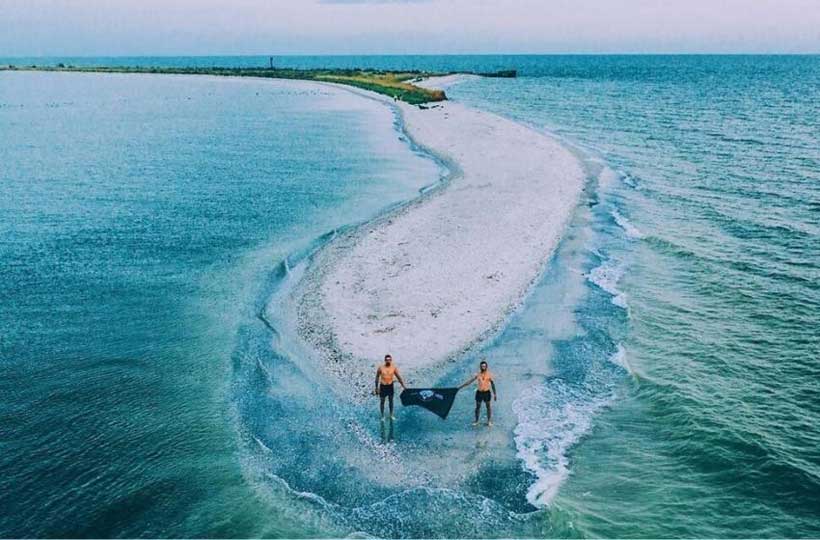
 BUSINESS & ECONOMY3 years ago
BUSINESS & ECONOMY3 years agoThe Black sea protection initiative: What should we remember?
-

 BUSINESS & ECONOMY2 years ago
BUSINESS & ECONOMY2 years agoDistributed Infrastructure: A Solution to Africa’s Urbanization

